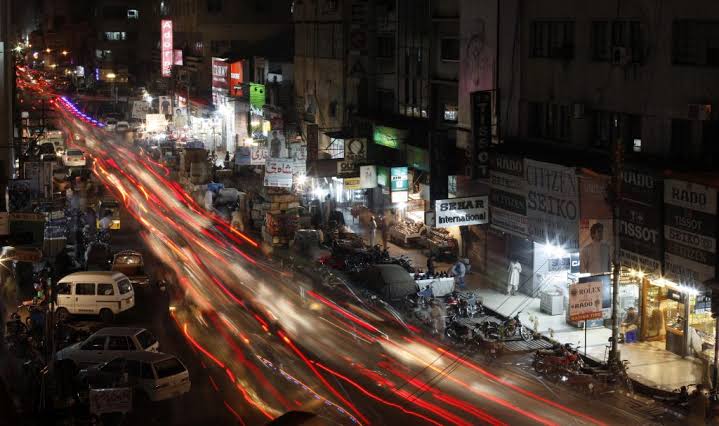Residents of Hunza live in fear as glacier melt threatens their future

Advertisement
The villagers of Hassanabad in Pakistan’s Hunza district live in constant fear as climate change has caused the vast Shishper glacier above them to melt and move towards them at as much as four metres per day.
Late last month, residents of the tiny village of Hassanabad noticed floodwaters quickly rising in the stream that runs near their homes, carrying water from the towering glacier.
“The flows became so high that they eroded the land and reached 10 feet from my family’s home. We evacuated,” said Ghulam Qadir, a resident of the village.
Due to floods, carrying huge boulders of jagged black ice has demolished cherry, apricot and walnut orchards many families depended on, and left homes cracked, 16 families in tents and local irrigation and hydropower systems damaged.
The flood water broke all the retaining walls that were built last year in order to protect the village,” Qadir said. “Now there is a ravine right next to our houses and we live in dread of another flood.”
The area is one of 24 valleys in northern Pakistan scheduled to receive warning systems, between 2018 and 2022, for glacial lake outburst floods using $37 million in funding from the Green Climate Fund.
“But work has been delayed as a result of differences between the partners, the UN Development Programme-Pakistan and the federal Ministry of Climate Change, as well as by a change of government and now the coronavirus”, said Ayaz Joudat, national programme director for the project.
“The delay is partly due to the outbreak of Covid-19 and partly because UNDP-Pakistan would not finalize the letter of agreement signed with the Ministry of Climate Change, which would give us oversight over hiring of staff and other matters”, he said.
However, Joudat has said that the delay was recently resolved and hiring will now begin at the end of June, with an aim of installing the first early warning systems on glaciers by September.
Due to climate change, most glaciers worldwide have begun to shrink, but due to a meteorological anomaly this is one of a few in the Karakoram mountain range in northern Pakistan that are surging.
This implies that hundreds of tonnes of ice and debris are pushing down the valley at ten times the normal rate or more.
With more than 7,000, Pakistan has more glaciers than anywhere except the polar regions.
But climate change is “eating away Himalayan glaciers at a dramatic rate”, a study published last year in the journal Science Advances noted.
As glacier ice melts, it can collect in large glacial lakes, which are at risk of bursting their banks and creating deadly flash floods downstream, in places like Hassanabad.
According to United Nations Development Programme (UNDP), more than 3,000 of those lakes had formed as of 2018, with 33 of them considered hazardous and more than 7 million people at risk downstream.
In an effort to reduce the risks, pilot funding from the UN Adaptation Fund from 2011-2016 paid for two lake outburst warning systems, flood protection walls and community preparedness efforts in Chitral district and in the Gilgit-Baltistan region.
The new project aims to install similar systems in 15 districts in northern Pakistan, and to build other infrastructure to reduce risks, including flood walls in villages like Hassanabad.
Shehzad Baig, assistant director of the Gilgit-Baltistan Disaster Management Authority in Hunza, said the recent flood in Hassanabad was spurred not by a typical glacial lake outburst but by rapid glacier melt.
That melting is likely to pick up over the summer months, he said, noting that “June to September will be dangerous”, particularly after a winter of heavy snowfall.
Advertisement






